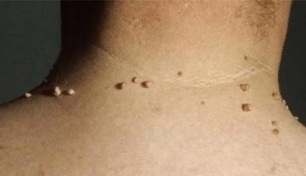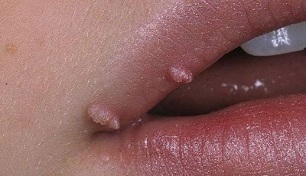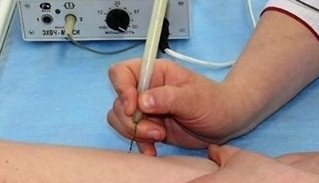When nappy-like growths appear on the trunk, limbs or face, it is always an unpleasant surprise for a person. These are benign formations on the skin, which can be multiple or single. Unfortunately, papillomas are a very common disease of the body that develops due to infection with the human papillomavirus (HPV), but it is not a problem to treat in modern conditions.
What are papillomas on the body
Papillomavirusis a benign tumor that grows from the tissues of the squamous epitheliiam. It appears as a drop or papilla on the skin, mucous membranes, and may affect a person’s internal organs. There are more than 30 types and subspecies of HPV that can enter the human body easily. Depending on the type of pathogen, different groups of papillomas are formed on the body. They differ in growth rate, appearance, location.
Papillomavirus can be detected anywhere on the body:- natural folds
- : groin, armpits, mammary glands, lower abdomen; face
- : eyelids, near the eyes, near the mouth; stock
- : back, abdomen, neck, hands, feet; genitals
- : vaginal, penile area;
- internal organs: intestines, stomach, bladder, esophagus, larynx, trachea.
What a papilloma looks like

HPV can look different on the outside. These are usually oval growths on the body or papilla-like rounding processes on the skin.
They can be small (1-5 mm), medium (1 cm), large (1-3 cm) and huge (over 3 cm) in size. The texture of the papules is relatively loose and soft. Transverse blood vessels are often visible on the surface.
The color is mostly flesh and all kinds of brown. There have been cases where papillomas have a blue, purple and even black-and-black shade.
Why papillomas appear
These growths on the body are of a viral nature. The infection is transmitted through contact with the carrier of a healthy person. Both men and women are susceptible to infection, but are affected differently by the virus. The weakest sex may feel burning and itching in the genital area, bleeding and other foreign discharge from the vagina. The disease is sometimes accompanied by syphilis, chlamydia, herpes and other sexually transmitted pathologies.
Men are not afraid of certain types of the virus that are dangerous to women (16, 18). However, the stronger sex is a carrier of infections. For papillomas of the genitals, frenulum and glans or in the urethra, these are painless neoplasms of type 6 and 11 that need to be removed. Penile cancer is very rare.
Methods of Infection
The infection is especially active in gyms, swimming pools, saunas, baths. Other causes of the appearance of papillomas on the body are sexual intercourse, childbirth (from mother to child).
Here are some other ways to become infected with human papillomavirus:- while kissing, because the virus is in saliva;
- using the infected personal items;
- where medical instruments are under-processed.
Types and varieties
The number of types of neoplasms on the body is estimated in large numbers, so doctors have divided them into 5 groups, combining them by color, symptoms and risk of malignant skin cell degeneration:
- Simple papillomas.They are also called vulgar warts. It has the widest prevalence. The first sign of HPV is a slight growth on the skin. In the process of development, it is transformed into a dark keratinized tube. It is localized in groups and individually. The best places to localize are hands, the lower part of the face.
- Flat papillomas.A characteristic feature is the accumulation of group growth. Flat papillomas do not bulge, but are painted in a dark color. The main place of distribution is the upper body, the genital area.
- genital warts.The site is the mucous membranes of the body and genitals. These types are at risk of oncogenicity. The main cause of genital warts is sexual intercourse.
- Papillomas filiform.In the scientific world, they were called "acrochords". A characteristic feature of this species is the foot that supports the mole. Acrochords are ancient growths, as they are mostly seen on the body of middle-aged and elderly people.
- Internal papillomas.This subgroup includes all neoplasms that develop on the internal organs. It is impossible to independently identify genital warts of this group; this requires special diagnostics. The presence of disease can bring out symptoms.
Virus Danger
Human papillomavirus virus infection is not usually a major health hazard. However, some species are capable of degenerating into a malignant tumor. Non-oncogenic papillomas can create a lot of discomfort if they start to grow, for example, on the back, mouth or groin area. They are often injured, after which ulcers and wounds remain on the body, leaving them open for infections. Bladder condylomas often stimulate an inflammatory process, and sometimes female infertility leads to growths in the uterine cavity.Diagnostics
If you notice papilloma on your body, you should consult a dermatologist. After the initial examination, the doctor will send the patient for cytology examination and blood test (tumor markers, HPV, DNA). This is necessary to determine pathological processes and to determine the type of viral infection in terms of oncotic risk. If a tumor of the cervix is visible, then colposcopy is required.
How to get rid of papillomas on the body
There are many methods to treat growth. It is best to stop the growth of papillomas on the body during complex therapy. It is impossible to completely eradicate the human papillomavirus virus from the body, but its activity can be reduced for a long time by increasing immunity. Proliferation of papules is treated with surgical and therapeutic methods. Folk recipes also help during HPV infection.
How to get rid of HPV with medication
When HPV is first seen, doctors prescribe medication to reduce the chances of infecting others. Various medications are used to combat viral infections in gynecology and dermatology.Laser End
People often resort to surgical removal if they look anesthetic or cause discomfort, for example, if they are in intimate areas, in the neck area or in the natural folds of the skin. Laser removal of some papillomas takes a few minutes. Its basis is the use of a device that burns a neoplasm. There is no contact with the skin, which guarantees the high safety of the procedure. Advantages of the technique include lack of blood loss, no pain and quick recovery.
Disadvantages of laser treatment:
- high cost; impossible
- study remote growth.
Liquid nitrogen
Elimination of neoplasms with liquid nitrogen (cryodestruction) is less effective. Although the procedure is simple, it requires preparation: thoroughly wash the frozen parts of the skin, shaving off the hair, if present. To apply nitrogen, the specialist uses a metal swab with a cotton cord, which is immersed into a container with clear liquid. After that, contact with papilloma occurs within 1-5 seconds. Rehabilitation occurs within 2-3 days. The advantages of the procedure are simplicity and speed of the procedure, high efficiency.Disadvantages of the method:
- the likelihood of damage to the surrounding tissues; pain
- during launch;
- failure to achieve large growth,
Treating papillomas by radio wave method
The essence of the technique is to influence the construction of high-frequency radio waves, which are completely harmless to health. To remove the papilloma, the doctor fixes the beam for a few seconds at the point of problem. After the procedure, drug therapy is prescribed. The advantage of the method of radio waves is its versatility - different types of warts, moles, papillomas on any part of the skin disappear easily. It can even be used for difficult areas like the eye area. There are no scars after the procedure.
Disadvantages of the method:
- high cost;
- is not effective for removing large growths.
Electrocoagulation

A medical procedure in which benign growths are removed by a precisely coordinated electric current. Electro-heating is performed by a device equipped with a loop and an electrode, which is heated to a high temperature. The manipulation is performed under local anesthesia. For children, transfusion is performed under general anesthesia. After the tumor has burned, the skin will be treated with antibiotics. The procedure takes 5-10 minutes.
Advantages of the method include safety and efficacy of skin disease removal, prevention of the likelihood of infection, feasibility of histology.
Cons of electrocautery:- risk of
- residual scarring;
- relative bitterness;
- long recovery period (up to 10 days);
- at the site can be removed, redirected.
How to remove peat and papillomas with folk remedies
According to the reviews of patients who were carriers of HPV, the use of alternative prescriptions after drug therapy and / or any transfusion methods helps to remove the virus more quickly.
At home, in the case of external manifestations of papillomas, the following methods are effective:- Celandine.The skin needs to be lubricated with neoplasm with fresh squeezed plant juice several times a day.
- Banana.To speed up the therapy, it is necessary to apply the fruit pulp to the neoplasms. Banana is especially effective for small plantar warts.
- to perform periodic tests for HPV; avoid
- casual sexual contact;
- maintaining immunity: eating right, temperament;
- controls the growth and change in the shape of untreated papillomas; Vaccine
- with 2% serum (three times within six months).














































































